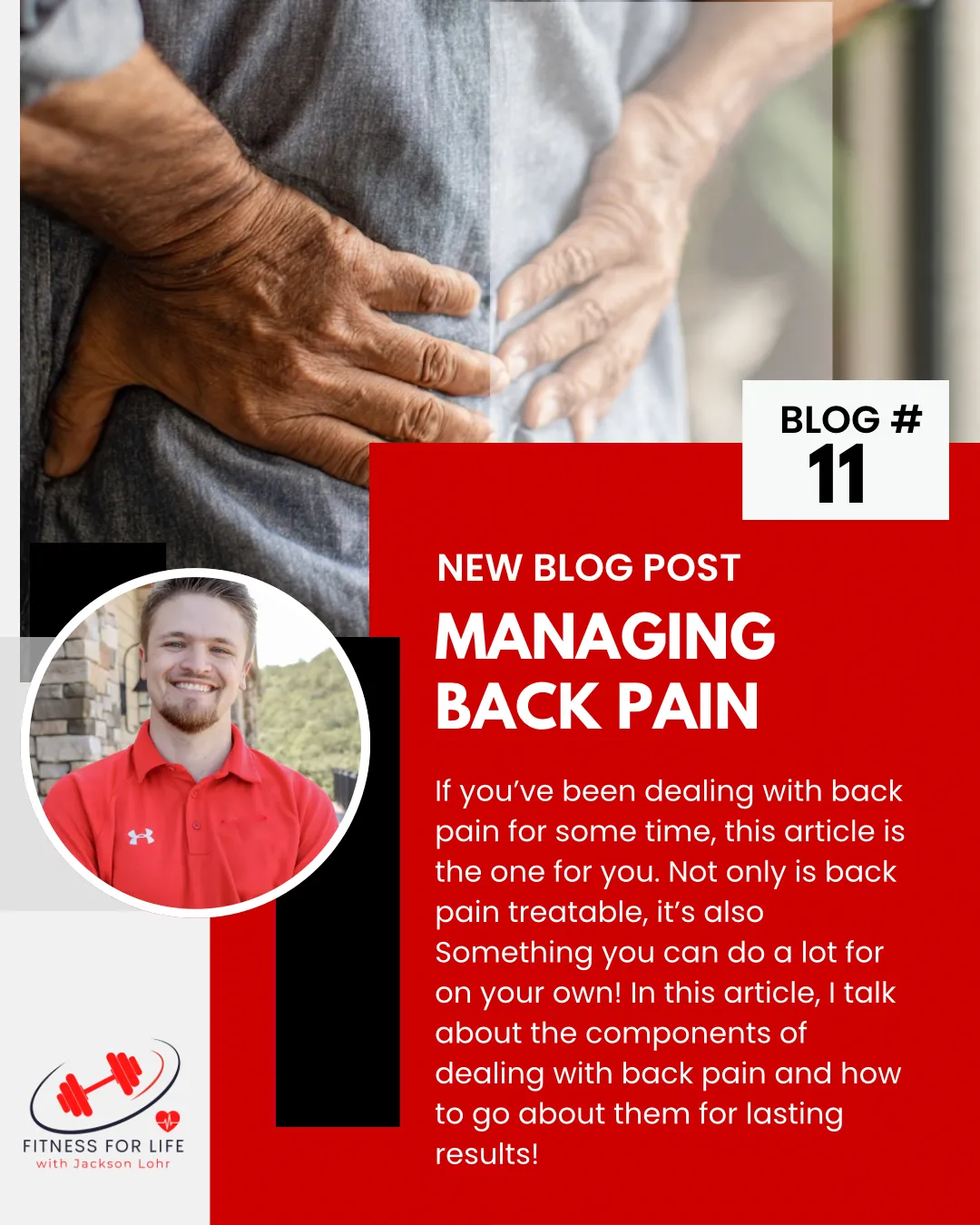
Understanding and Managing Back Pain
Understanding and Managing Back Pain
Back pain is one of the most common challenges I see people face, and over the years, I’ve learned that managing it effectively takes a balanced, active approach. I want to share some of the strategies and perspectives I’ve found most helpful—both in my own experience and in working with clients who struggle with recurring discomfort.
A Quick Note Before We Begin
I’m sharing these insights from a fitness and health perspective, not as a medical provider. If you’re dealing with persistent or severe back pain, it’s essential to consult a physical therapist or other qualified professional to rule out serious conditions like spinal fractures or spinal cord injuries.
Active vs. Passive Approaches
When it comes to managing and reducing back pain, we can take the route of using both active and passive strategies. Active strategies—like regular movement, exercise, and mobility work—mean that you yourself are doing something. You are using your body in a way that helps it to heal. Passive strategies, such as chiropractic adjustments or massage, can offer relief as well but tend to be short-term solutions when used in isolation. The data tells us that active approaches to treatment solutions -whether used in isolation or in tandem with passive methods- result in the best long-term outcomes (Baroncini, 2025)
Why Walking Helps So Much
One of the simplest and most powerful tools for managing chronic low back pain is walking. Regular walking promotes circulation, supports spinal mobility, and strengthens the muscles that stabilize your back. I encourage people to start small and gradually build up their walking time—this helps reduce discomfort while building consistency. Taking it a step further, regular step count is one of the best things you can do to improve your overall health reduce all-cause mortality risk substantially. While the ideal step count for an individual is unknown, we know that for most, it lies somewhere between 7500 and 12,000 steps, so finding a daily average within that range is ideal
Building Strength Through Full Movement
Our backs are capable of moving in many directions—flexing, extending, twisting, and bending side to side. Training through these full ranges of motion helps build resilience and prevent pain. Twisting and bending side-to-side is what is most often disregarded or overlooked. I try to focus on developing strength not just in comfortable positions but in the deeper ranges where people tend not to be as flexible.
Lifestyle Habits That Make a Difference
Back pain isn’t just about movement—it’s about lifestyle, too. Quality sleep, proper hydration, and good nutrition make a huge difference in how my body feels and recovers. When I’m short on sleep or not drinking enough water, I develop stiffness and slower progress. My clients notice it too, as sleep can often be the primary thing that makes the difference between reducing and managing your pain.
For some, I recognize that sleep is often impaired by the back pain itself, interrupting sleep and waking you in the night, oftentimes to the point where you are unable to fall back asleep. For that situation, sleep is still something to focus on, but you have to understand that you can only control the factors you have power over (habits, routine, nutrition, sleep aids) and that it may take some time to get to a point where you are not waking up in the night.
Managing Stress and Your Environment
Stress has a powerful effect on how we experience pain. When we’re under constant stress, our bodies tend to stay tense, making pain and stiffness feel worse. If you make it a priority to manage stress through intentional breath work, mindfulness strategies (journaling for example), and keeping a positive environment that supports recovery and well-being.
Final Thoughts
Managing back pain isn’t about finding a quick fix—it’s about building habits that help your body move better, recover faster, and feel stronger over time. With a combination of movement, mindful living, and professional guidance when needed, lasting improvement is absolutely possible. If you're struggling with back pain and there are some things on this list that you're not currently focusing on, pick one or two and make a change. Give it time and be patient for results, and they will come!
